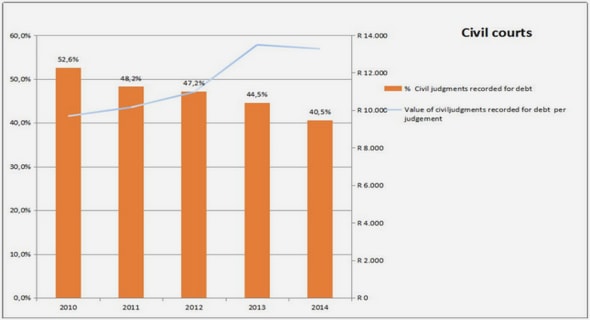(Downloads - 0)
For more info about our services contact : help@bestpfe.com
Table of contents
Chapter I Phosphorus cycle in agroeco-systems and conservation agriculture: General Introduction
Chapter II Phosphorus in agro-system
2.1. General situation of phosphorus resource in the world
2.2. Phosphorus in soil
2.2.1. Phosphorus species in soil
2.2.2 Soil phosphorus availability to plants
2.2.3. Soil phosphorus test
2.3. Phosphorus cycle in field
2.3.1. Phosphorus fertilizer application
2.3.2. Phosphorus losses by erosion, runoff and leaching
2.3.3. Phosphorus uptake by plants
2.3.4. Other phosphorus flows
2.4. Phosphorus management
2.4.1. Crop response to applied phosphorus
2.4.3. Phosphorus in nutrient balance
2.4.4 Simulation models of phosphorus cycle in agroecosystems
2.5 Conservation agriculture and no-till system
2.5.1. Conservation agriculture
2.5.2. No-till and simplified tillage methods
2.5.3. Advantages and disadvantages of no-till
2.5.4. Soil properties and nutrient distribution under no-till
2.6 Hypotheses and objectives
Chapter III The Long-term (23 years) Effects of Tillage Practice and Phosphorus Fertilization on the Distribution and Morphology of Corn Root
3.1. Résumé
3.2. Abstract
3.3. Introduction
3.4. Materials and Methods
3.4.1. Site description
3.4.2. Root sampling and analysis
3.4.3. Soil sampling and analysis
3.4.4. Crop harvest
3.4.5. Statistical analysis
3.5. Results
3.5.1. Root mass and its distribution in soil profile
3.5.2. Root morphological traits: root surface density, root length density, average root diameter, root diameter distribution and root P content
3.5.3. Soil properties
3.5.4. Corn yield, and cumulative P budget and relation with corn roots
3.6. Discussion
3.6.1. Spatial distribution of corn roots
3.6.2. Corn roots affected by tillage practice
3.6.3. Corn roots affected by P fertilization
3.6.4. Corn roots affected by the interaction of tillage practice and P fertilization
3.7. Conclusion
3.8. Acknowledgement
Chapter IV Soybean root traits after 24 years of different soil tillage and mineral phosphorus fertilization management
4.1. Résumé
4.2. Abstract
4.3. Introduction
4.4. Materials and Methods
4.4.1. Site description
4.4.2. Root sampling and analysis
4.4.3. Soil sampling and analysis
4.4.4. Crop harvest
4.4.5. Statistical analysis
4.5. Results and discussion
4.5.1. Soil nutrient stratification
4.5.2. Lateral and vertical root characteristics
4.5.3. Root quantity (biomass) affected by tillage and P fertilization
4.5.4. Vertical root length proportion affected by tillage and P fertilization
4.5.5. Root morphology affected by tillage and P fertilization
4.5.6. Soybean yields
4.6. Conclusion
4.7. Acknowledgements
Chapter V Validation of an operational phosphorus cycling model CycP for a long-term ploughed and soybean-corn cropped agroecosystem in eastern Canada
5.1. Résumé
5.2. Abstract
5.3. Introduction
5.4. Materials and methods
5.4.1. Field experiment
5.4.2. Laboratory determination of soil properties needed to calculate plant-available soil P
5.4.3. Validation of the CycP model
5.5. Results and Discussion
5.5.1. Dynamics of diffusive Pi at the solid-to-solution interface of soil
5.5.2. Simulations vs. field-observations of Cp
5.5.3. Simulations of P fertilization scenarios with CycP model
5.6. Conclusion
5.7. Acknowledgments
Chapter VI Spatial assessment of the contribution of subsoil P to crop P nutrition
6.1. Résumé
6.2. Abstract
6.3. Introduction
6.4. Materials and Methods
6.4.1 Site description
6.4.2 Soil sampling for phosphate ion transfer kinetics
6.4.3 Soil sampling for Cp along soil profile
6.4.4 Root sampling and analysis
6.4.5 Phosphorus uptake weighting factor and proportion
6.4.6 Statistical analysis
6.5. Results
6.5.1 Soil P status (Cp) data
6.5.2 Crop root distributions
6.5.3 Phosphate ion transfer kinetic and soil P availability estimation
6.5.4 Phosphate uptake proportions
6.6. Discussion
6.6.1 P uptake effected by tillage practice
6.6.2 P uptake proportion from subsoil P stock
6.7. Summary and conclusion
6.8. Acknowledgements
Chapter VII Simplified model for phosphorus cycle in long-term no-till agroecosystems
7.1. Résumé
7.2. Abstract
7.3. Introduction
7.4. Materials and methods
7.4.1. Model structure
7.4.2. P flux estimation
7.5. Software
7.6. Results and discussion
7.6.1. P stock and flux
7.6.2. Soil P status evolution in NT
7.6.3. Comparison with measured data
7.7. Conclusions
7.8. Acknowledgement
Chapter VIII Conclusion and perspectives
References



